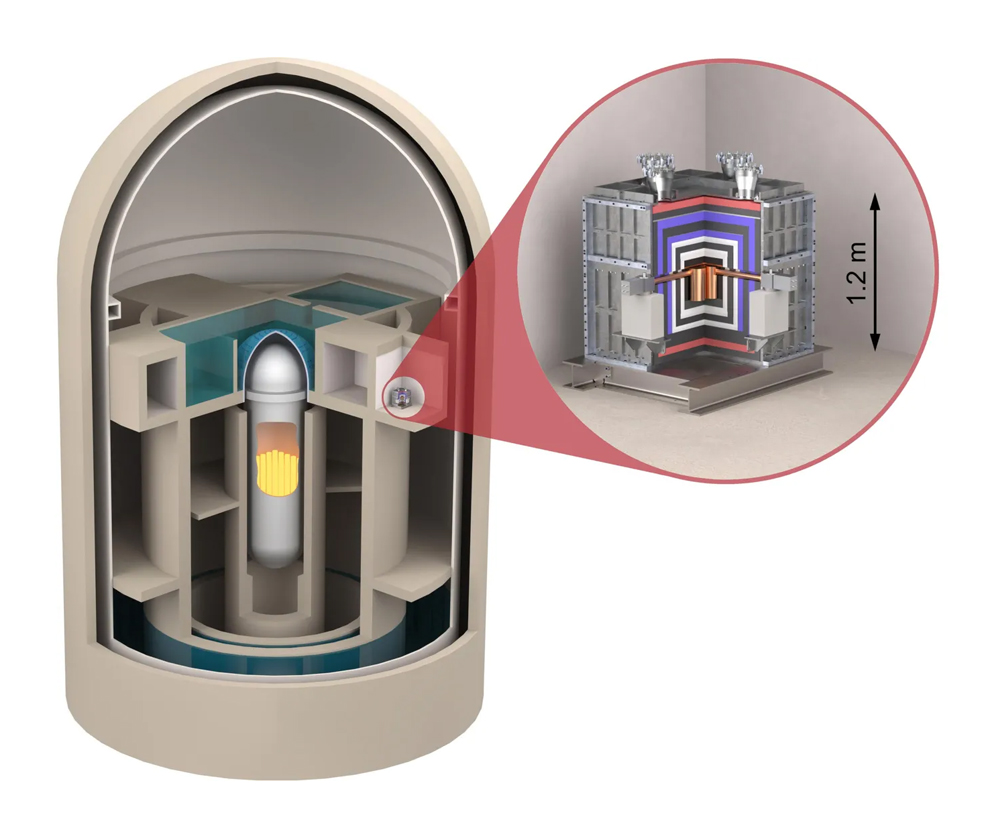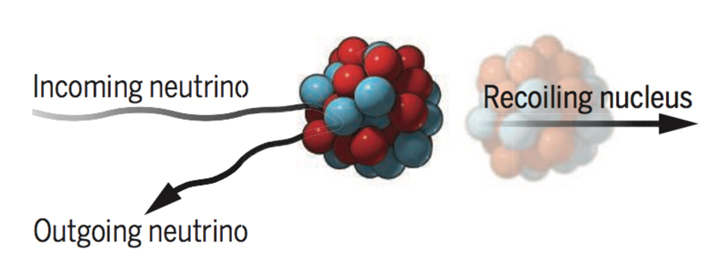
5th August 2025 Miniature neutrino detector confirms 50-year-old theory Neutrino interactions have been observed at a nuclear power plant in Switzerland, using a device weighing just 3 kg – orders of magnitude smaller than typical neutrino detectors. This confirms a theory first proposed in 1974, and could lead to portable neutrino sensors for reactor monitoring, non-proliferation, and new physics discoveries.
Scientists have finally measured a long-elusive neutrino interaction at a commercial nuclear power plant, more than five decades after its original prediction. Neutrinos are minuscule, nearly massless particles that pass effortlessly through matter – trillions stream into and out of your body every second, without leaving a trace. The newly observed process, known as coherent elastic neutrino–nucleus scattering (CEvNS), appeared in theory papers in 1974 but had never shown up at low energies in a reactor-based setting – until now. Researchers from the Max Planck Institute for Nuclear Physics achieved this milestone during the CONUS+ experiment. This involved placing a small detector about 20 metres from the reactor core at the Leibstadt Nuclear Power Plant in Switzerland. Despite using only 3 kg (6.6 lbs) of high-purity germanium, the team detected a statistically significant neutrino signal and confirmed the effect at full coherence. In CEvNS (pronounced "Seven-S"), a neutrino scatters off an entire atomic nucleus, rather than individual protons or neutrons. As shown below, the nucleus recoils slightly from the impact, transferring a tiny amount of energy. This quantum effect boosts the interaction rate – especially at low energies – making it possible to detect neutrinos with much smaller, more compact detectors.
Typical neutrino experiments require enormous volumes of material. Japan's Super-Kamiokande observatory, for example – located 1,000 metres underground – uses 50,000 tonnes of ultrapure water in a tank measuring 40x40 metres to capture fleeting traces of neutrinos. By contrast, CONUS+ operated with just a few kilograms of detector mass, yet still succeeded. The team carried out their measurements over 119 days. After carefully subtracting background noise, they identified 395 neutrino events – a number closely matching theoretical predictions. These results confirmed the detector's sensitivity at lower energies than ever before in a reactor setting. The reactor neutrinos also enabled the study of CEvNS in a fully coherent regime, where the entire atomic nucleus responds as a single unit. This condition improves the precision of theoretical models and will enhance the ability to test for new physics beyond the Standard Model. The results from CONUS+ have implications beyond basic research. The technology behind this tiny detector could lead to compact, mobile neutrino sensors with broad applications. By monitoring CEvNS signals in real time, researchers could track the output and fuel composition of nuclear reactors with greater precision – a valuable tool for safety, efficiency, and non-proliferation efforts. Traditional inspection tools like Geiger counters or gamma detectors measure radiation escaping from a reactor's exterior. Neutrino sensors, by contrast, offer a powerful complement: they can infer what's happening deep inside the core – even through metres of concrete shielding. Since neutrinos pass through matter almost unhindered, they provide a non-intrusive, tamper-resistant way to monitor a reactor's heat output and fuel composition, with no direct access required. The CONUS+ experiment demonstrates that even miniature detectors can pick up meaningful neutrino interactions in challenging environments. What once required excavating a mountain to house facilities now fits inside a cubic metre. As this technology matures, scientists could deploy portable neutrino sensors in a variety of settings – from routine power plant monitoring to detecting clandestine nuclear activity, watching for distant supernova explosions, or helping geologists to better understand Earth's interior. "The techniques and methods used in CONUS+ have excellent potential for fundamental new discoveries," said Prof. Manfred Lindner, initiator of the project and co-author of a study that appears in Nature. "The groundbreaking CONUS+ results could therefore mark the starting point for a new field in neutrino research."
Comments »
If you enjoyed this article, please consider sharing it:
|
||||||








